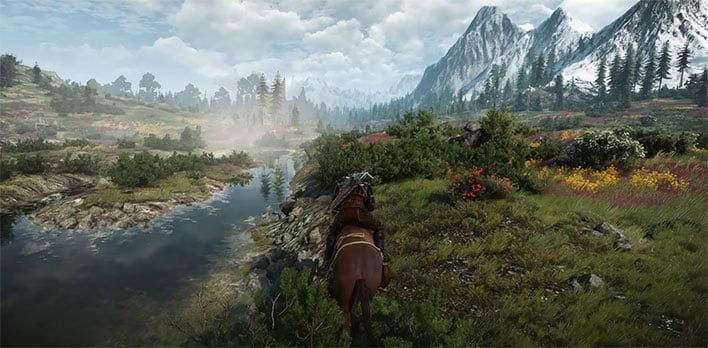For anyone who has not yet played
The Witcher 3: Wild Hunt, you might as well wait one more day. That's because developer CD Projekt Red is releasing its free
next-gen update tomorrow, for a
still-popular game that first arrived on the scene almost eight years ago. And if you happen to be playing on PC, you'll have access to an exclusive "Ultra+" graphics setting.
According to the release notes, the Ultra+ setting "significantly increases the visual fidelity of the game" on PC. The setting affects a range of environments and subjects, including the number of background characters, shadow quality, grass density, texture quality, foliage visibility range, terrain quality, water quality, and the overall detail level.
It's not yet mentioned what kind of GPU firepower you'll need to play
The Witcher 3: Wild Hunt on its Ultra+ setting, but its arrival comes on the heels of AMD launching its
Radeon RX 7900 XTX and Radeon RX 7900 XT graphics cards to retail (today).
Likewise, NVIDIA is playing in next-gen GPU territory as well, with its
GeForce RTX 4090 and
GeForce RTX 4080. If you own one of those cards, CD Projekt Red notably discloses that the next-gen update also introduces
DLSS 3 support.
Don't worry though, CD Projekt Red isn't playing favorites. The next-gen update also adds support for AMD's
FSR 2.1 technology, on both PC and console. That's in addition to a plethora of graphical goodies available on both platforms, including ray-traced global illumination (PC players can also enable ray-traced reflections and shadows), ambient occlusion, updated sky textures, various mesh improvements, and a whole lot more.
For those who plan to play the game on a PlayStation 5 or Xbox Series X, the next-gen update delivers a ray tracing mode with dynamic resolution scaling targeting 30 frames per second. There's also a Performance mode that targets 60 frames per second.
There are no ray tracing effects available on the Xbox Series S, though the Quality mode is said to provide increased resolution and better image fidelity at 30 frames per second, while the Performance mode prioritizes smoother gameplay over maximum eye candy.
It's an
expansive update (see the patch notes for the full list of changes and additions) for a game that, remarkably, still holds up so many years later.

